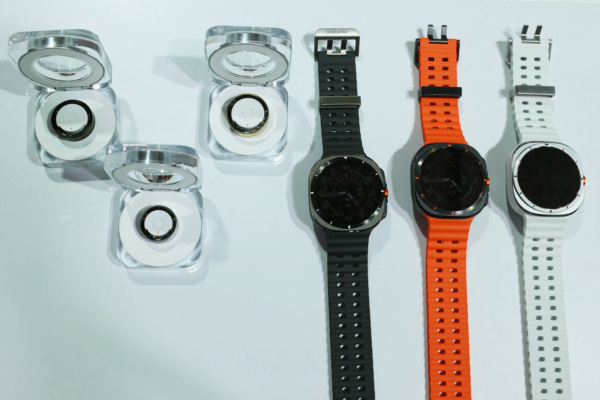On Wednesday, July 10th, Samsung launched the Galaxy Ring, marking its first foray into the field of “smart rings.” The South Korean tech giant also unveiled a new high-end wearable device that bears a resemblance in appearance and functionality to the Apple Watch Ultra. With the release of these products, Samsung aims to integrate its smartphones and wearables, providing health tracking features to compete with Apple in this sector.
Samsung introduced the Galaxy Ring at its Galaxy Unpacked event in Paris, France, emphasizing the device’s lightweight design equipped with sensors for 24/7 health monitoring and a battery life that lasts a week on a single charge. Over the past few months, Samsung has been promoting the Galaxy Ring as part of its efforts to market health apps that are increasingly popular among consumers.
The company positioned the “ring” as a device that can be worn alongside smartwatches and smartphones, enabling users to perform functions like answering calls or taking photos with a simple finger gesture when paired with a watch and phone. Samsung believes that this strategy will drive sales of its other products.
According to Samsung, when the Galaxy Ring is paired with smartwatches and phones, users can gain more detailed insights into their health status, especially during sleep, as these devices gather data from various sources. Samsung also notes that when worn with a smartwatch, the battery life of the Galaxy Ring will extend.
“Both watches and rings are part of expanding ecosystems, and as artificial intelligence technologies are laid upon data collected from different devices, the ecosystem becomes increasingly important,” said Francisco Jeronimo, Vice President of Device Research for Europe, the Middle East, and Africa at IDC, in an email to CNBC.
“This truly personalized experience will prompt users to choose devices from a particular brand rather than others.”
Like Apple, Samsung has been focusing on enhancing the connectivity of its devices in recent years to maintain user engagement.
The Galaxy Ring by Samsung can monitor the following:
– Sleep: Tracking sleep movements, sleep latency, heart rate, and breathing rate, analyzing sleep quality.
– Menstrual cycle: Utilizing skin temperature to help track an individual’s menstrual cycle.
– Heart rate: Alerting users when their heart rate is unusually high or low, providing real-time heart rate monitoring.
– Exercise: Detecting the exercises or activities that a person is engaged in.
The weight of the Galaxy Ring ranges from 2.3 to 3 grams, depending on the size purchased, and it is available in three color options. Similar to wireless earbuds, the Galaxy Ring comes with a portable charging case.
The Samsung Galaxy Ring will be available on July 24th with a starting price of $399.99.
Another significant digital health product unveiled at the event was the Galaxy Watch Ultra by Samsung, priced at $650 and made of titanium. It incorporates features such as sleep apnea detection and offers a battery life of two days.
This marks Samsung’s first release of an “Ultra” model smartwatch, designed for athletes and outdoor enthusiasts engaging in activities like hiking and mountaineering, equipped with new sensors and sports tracking functions.
“The smart ring market has always been niche; we expect shipments to be less than 2 million units this year. In comparison, the smartwatch market is much larger, reaching 163 million units,” IDC Vice President Bryan Ma told Bloomberg. “Given its vast distribution footprint and marketing influence, Samsung could potentially change the market size.”
The new Galaxy Watch Ultra shares similarities in appearance and features with the flagship Apple Watch Ultra, priced at $799, featuring a similar structure, night mode interface options, emergency sirens, and a “quick access button” to initiate exercises or other commonly used functions. The Ultra also improves sensors for heart rate monitoring, dual GPS frequencies for better tracking in congested cities, and a faster processor.
Samsung also introduced the Galaxy Watch 7, which resembles previous models but includes new AI features like energy scores that predict a person’s readiness based on their sleep and activity levels. Google’s Fitbit widgets already offer such indicators.
Google, a subsidiary of Alphabet, is set to launch a new Pixel watch in August with larger screen sizes. Apple typically releases its latest watches in September, planning significant upgrades to its Ultra and standard models, including introducing thinner, larger mid-range products.
On Wednesday, Samsung also unveiled its latest foldable devices: the Galaxy Z Fold 6 and Z Flip 6.

